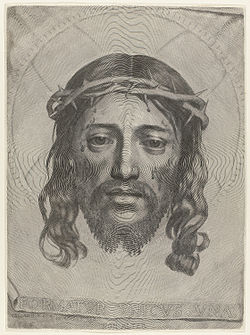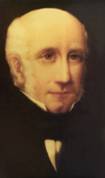| Part of a series on |
| Catholic devotions to the Holy Face of Jesus |
|---|
 |
| Prayers and sacramentals |
| People |
| Organisations |
| |

The Holy Face of Jesus is a title for specific images which some Catholics believe to be miraculously formed representations of the face of Jesus Christ. The image obtained from the Shroud of Turin is associated with a specific medal worn by some Roman Catholics and is also one of the Catholic devotions to Christ. [1] [2]
Contents
- The Veronica
- Marie of St Peter
- Leo Dupont
- Thérèse of Lisieux
- Shroud of Turin
- Maria Pierina De Micheli
- Vatican approval and Feast Day
- Theological analysis
- Institute for Holy Face research
- See also
- Notes
- Sources
- External links
Various acheiropoieta (literally "not-handmade") items relating to Christ have been reported throughout the centuries, and devotions to the face of Jesus have been practiced. Devotions to the Holy Face were approved by Pope Leo XIII in 1895 and Pope Pius XII in 1958. [3]
In the Roman Catholic tradition, the Holy Face of Jesus is used in conjunction with Acts of Reparation to Jesus Christ [4] with specific institutions whose focus is such reparations, e.g. the Pontifical Congregation of the Benedictine Sisters of the Reparation of the Holy Face. In his address to this Congregation, Pope John Paul II referred to such acts of reparation as the "unceasing effort to stand beside the endless crosses on which the Son of God continues to be crucified". [5]



